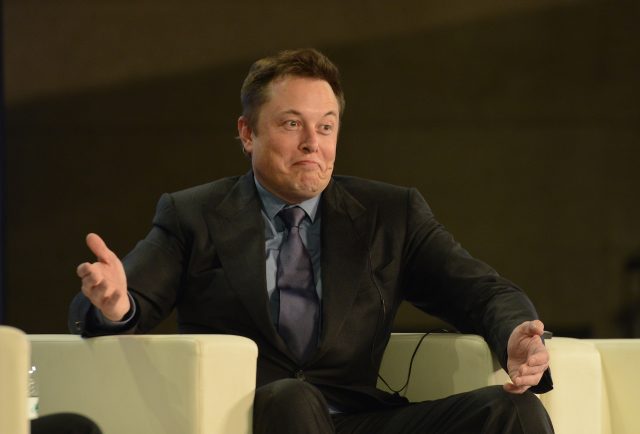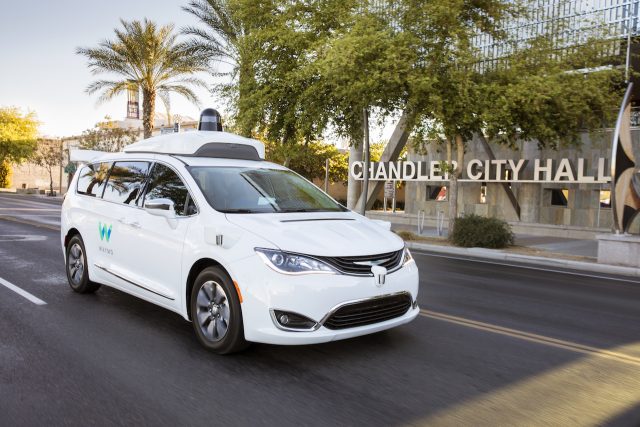It is no secret that Tesla's Autopilot project is struggling. Last summer, we covered a report that Tesla was bleeding talent from its Autopilot division. Tesla Autopilot head Sterling Anderson quit Tesla at the end of 2016. His replacement was Chris Lattner, who had previously created the Swift programming language at Apple. But Lattner only lasted six months before departing last June.
Now Lattner's replacement, Jim Keller, is leaving Tesla as well.
Keller was a well-known chip designer at AMD before he was recruited to lead Tesla's hardware engineering efforts for Autopilot in 2016. Keller has been working to develop custom silicon for Autopilot, potentially replacing the Nvidia chips being used in today's Tesla vehicles. When Lattner left Tesla last June, Keller was given broader authority over the Autopilot program as a whole.
Keller's departure comes just weeks after the death of Walter Huang, a driver whose Model X vehicle slammed into a concrete lane divider in Mountain View, California. Tesla has said Autopilot was engaged at the time of the crash. Tesla has since gotten into public feuds with both Huang's family and the National Transportation Safety Board, the federal agency investigating the crash.
"Today is Jim Kellers last day at Tesla, where he has overseen low-voltage hardware, Autopilot software and infotainment," Tesla said in a statement to Electrek. "Prior to joining Tesla, Jims core passion was microprocessor engineering, and hes now joining a company where hell be able to once again focus on this exclusively."
Tesla has a huge Autopilot problem

We don't know why Keller decided to leave. What we do know, however, is that he faced a hugely challenging situation at Tesla.
For the last 18 months, Tesla has been charging customers $3,000 for a "full self-driving" option for Autopilot. Tesla has promised customers that its current hardware—which includes radar and a bunch of cameras but no lidar—will be sufficient to achieve full self-driving capabilities. And since June 2016, Elon Musk has been predicting that full self-driving capabilities would be available within the next two years.
But nearly two years after Musk's prediction, Tesla doesn't seem to be close to delivering full self-driving capabilities to customers who paid for the feature. And there's a real question whether it's even possible to deliver full self-driving capabilities with the hardware Tesla has shipped since 2016.
Every other major company working on fully self-driving technology is using lidar as a key part of its sensor suite. Musk has repeatedly dismissed lidar as a "crutch," but it seems likely companies like Waymo and GM know what they're doing. Tesla's cars have fewer hardware redundancies than Waymo's and GM's cars, raising potential safety concerns if key components fail. And it's not known if the Nvidia processors on current Tesla cars are even powerful enough for full self-driving hardware.
Indeed, reporting from TheWall Street Journal suggests that Sterling Anderson, the head of the Autopilot program when Tesla started selling the "full self-driving" feature, wasn't sure the hardware would be sufficient for full self-driving capabilities. "The announcement shook up some engineers, because they believed that the product that was released wasnt designed to be self-driving," the Journal said. When Anderson was asked about the move by an employee, he reportedly responded that "this was Elons decision."
The decision to market Autopilot as a "full self-driving" system "was a factor in the decision by Mr. Anderson and at least two other engineers to leave the company," the Journal reported.
Since Anderson left, the project has faced a steady talent drain. In its piece last August, the Journal noted that the team "lost at least 10 engineers and four top managers." That included Anderson's successor, Chris Lattner, who lasted only six months.
And Lattner wasn't subtle when he left Tesla last summer.
Turns out that Tesla isn't a good fit for me after all. I'm interested to hear about interesting roles for a seasoned engineering leader!
— Chris Lattner (@clattner_llvm) June 21, 2017
Why running the Autopilot team is so hard

According to Electrek, Tesla is planning to split Keller's role into two jobs. Chip designer Pete Bannon will succeed Keller as head of Autopilot hardware efforts. Meanwhile, Andrej Karpathy, the head of Autopilot's machine-vision efforts, will be promoted to lead all Autopilot software efforts.
Keller's successors will face immense—and possibly contradictory—pressures.
On the one hand, the Autopilot team is facing pressure from regulators and safety advocates to more clearly position Autopilot as a driver-assistance feature. That could mean further limiting how long Autopilot will operate without a driver's hands on the wheel—or reducing the number of warnings a driver gets before the technology shuts off. It could mean adding new techniques for making sure the driver is paying attention: for example, a driver-facing camera. And it could mean limiting operation of Autopilot to only roads where Tesla is confident it will be safe.
At the same time, the Autopilot team faces pressure from Musk—and from customers who paid $3,000 for full self-driving capabilities—to expand Autopilot's capabilities and ultimately enable hands-free operation on all roads. Ideally, they'd figure out how to do that without requiring lidar sensors or other expensive upgrades.
The problem, of course, is that this might not be possible.
Indeed, Google—now Waymo—concluded years ago that the evolutionary approach Tesla is currently pursuing didn't make sense. Engineers observed that test drivers were too quick to trust early versions of its self-driving technology even when they were explicitly told to keep their hands on the wheel and their eyes on the road. So Google scrapped plans to market a driver-assistance technology and instead focused on building fully self-driving cars where a customer would never have to touch the wheel.
Waymo has focused on building an autonomous taxi service because that allows the company to roll its service out gradually, city by city. Waymo plans to start in Phoenix, where there are pristine roads and perfect weather 99 percent of the time. Over time, as its software becomes more capable, it will expand service to areas with more challenging situations—like snow or high-density urban environments. This strategy means that Waymo can add or replace sensors and other hardware to its cars as it learns what's required for full self-driving capabilities.
But that strategy isn't a good fit for a company like Tesla that's based on selling cars directly to customers. Customers expect their cars to work everywhere, not just in one particular metropolitan area or only in favorable weather conditions. Tesla doesn't have billions of dollars to spend mapping city streets and exhaustively testing the software with safety drivers. And customers who already paid for full self-driving mode aren't going to want to pay thousands of dollars extra to add lidar or additional processing power.
In short, Bannon and Karpathy have a challenging job ahead of them. If Elon Musk doesn't want to keep losing Autopilot leaders, he might want to consider modifying Tesla's Autopilot strategy to make sure that the job isn't impossible.
[contf] [contfnew] 
Ars Technica
[contfnewc] [contfnewc]







